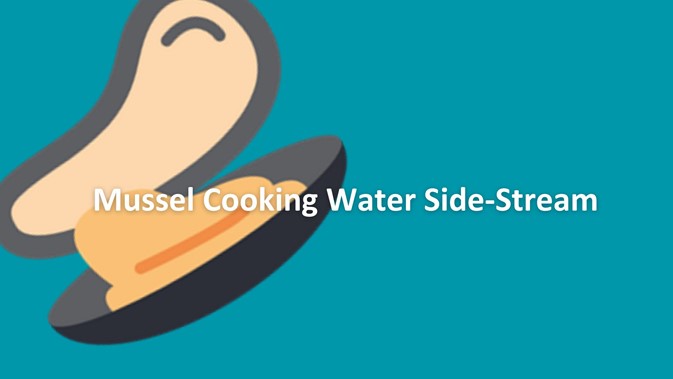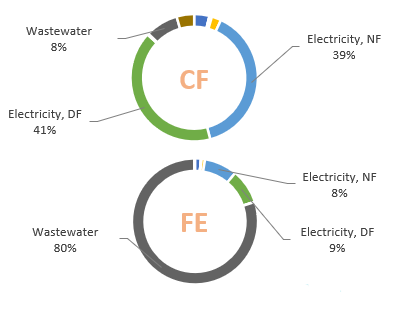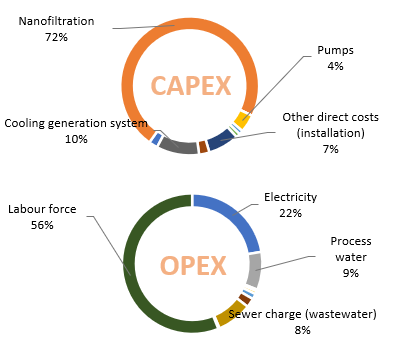Membrane Concentration Technology: Mussel Cooking Water Side-Stream
Overview of the Environmental and Economic Sustainability Assessment

The growing demand for the fishing industry has caused a significant rise in the volume of side streams. Side streams are often treated as waste, leading to both environmental consequences and economic losses. When liquid side streams are considered as waste, they are typically directed to wastewater treatment plants. However, due to the high organic content and salinity, this treatment can be costly and increase environmental burdens. Nevertheless, there is a promising alternative: valorising side streams.
The WaSeaBi project, an EU-funded Horizon 2020 initiative (grant agreement no. 837726), plays a significant role in advancing novel technologies in this regard. One of the value chains analysed within the project's scope is the mussel cooking water side stream. Extensive research has been conducted on the processing of mussel cooking water using membrane concentration technology to extract valuable savoury compounds. This novel process has been tested and implemented at a pilot plant in Galicia, Spain. The technology presented a ~90% reduction of the freshwater eutrophication potential, which allows the water to be used in the same process. To ensure that the implementation of this technology does not result in adverse environmental or economic consequences, a comprehensive sustainability analysis was conducted, using Life Cycle Assessment (LCA) and Life Cycle Costing (LCC) methodologies.
Environmental Sustainability Assessment
The carbon footprint (CF) impact category highlighted the substantial electricity consumption due to the technical characteristics of the filtration process, primarily driven by the electricity consumed during the nanofiltration (NF) and diafiltration (DF) stages. Implementing energy-saving measures and integrating renewable energy sources into the process would be beneficial in reducing its environmental impacts in the future.
 '
'
In the freshwater eutrophication (FE) impact category, the wastewater generated has a substantial impact. It is important to highlight that the results are derived from the pilot plant, and with future improvements in wastewater management, this environmental burden will be significantly reduced. The potential for re-utilization of wastewater from filtration presents an opportunity.
Mussel icon created by Smashicons - Flaticon
Economic Sustainability Assessment
The cost and revenue evolution over time revealed a notable increase in net benefits. Since the machinery possesses a long service life, high investments are not anticipated over long periods. The analysis shows that the most substantial capital expense (CAPEX) is associated with nanofiltration, primarily due to its significant initial investment requirement. Also, labour and electricity constitute a noteworthy portion of the operational expenses (OPEX).

- Functional Unit: prod. of 1 kg of savoury compounds.
- System Boundaries: Cradle-to-Gate.
- Method: Environmental Footprint (EF) 3.1.
For more details on this value chain, watch this video.